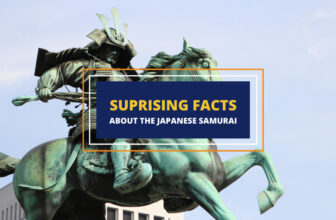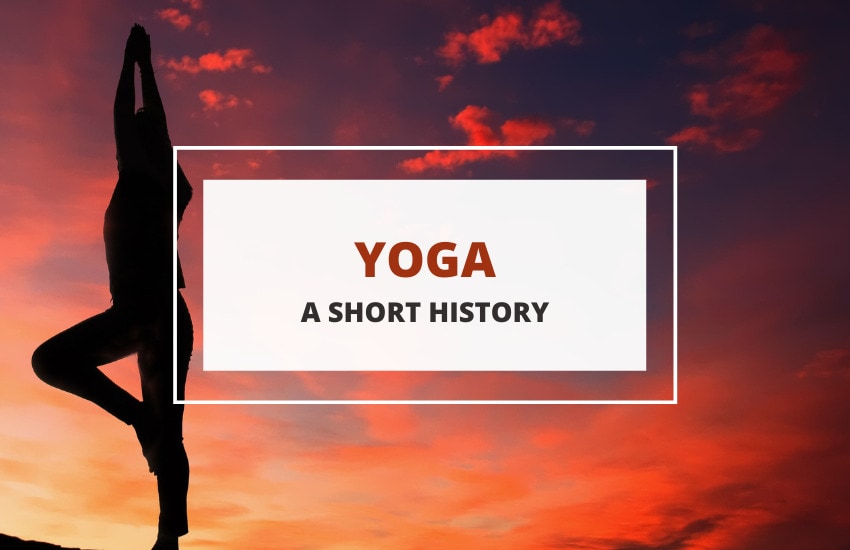
In today’s world, yoga is well-known for its physical and physiological benefits. However, this low-impact activity also has a long history that seems to go as far back as 5000 years. Continue reading to learn more about yoga’s ancient origins, the religious and philosophical concepts associated with it, and its evolution across time.
The Ancient Origins of Yoga
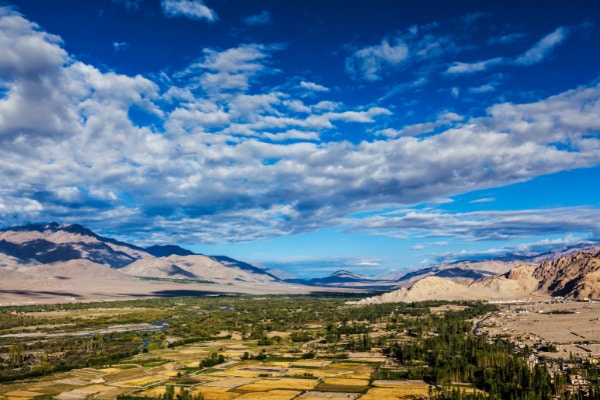
Historical evidence suggests that yoga was first practiced by the Indus-Sarasvati Civilization, also known as the Harappan Civilization, that flourished in the Indus Valley (present-day North-West India), sometime between 3500 and 3000 BC. It probably began as a contemplation exercise, practiced to ease the mind.
However, it’s difficult to know how yoga was perceived during this period, mainly because nobody has yet discovered the key to understanding the Indus-Sarasvati people’s language. Thus, their written records remain a mystery for us even today.
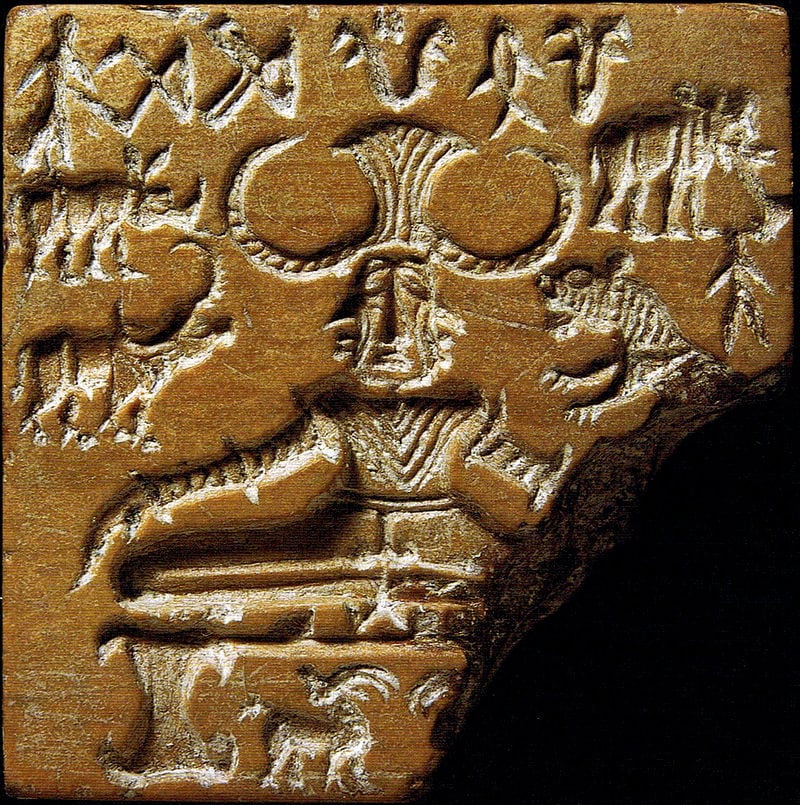
Perhaps the best clue that historians had from this early period regarding the practice of yoga, is the image that can be seen in the Pashupati seal. The Pashupati seal (2350-2000 BC) is a steatite seal produced by the Indus-Sarasvati people that depicts a seated tricephalic, horned man (or deity), who seems to be peacefully meditating between a buffalo and a tiger. For some scholars, the seemingly effortless control that the seal’s central figure exerts over the beasts surrounding him might be a symbol of the power that the calmed mind holds over the wild passions of the heart.
After becoming the largest civilization of the Ancient world at its zenith, the Indus-Sarasvati civilization began to decline sometime around 1750 BC, until it faded away. The reasons for this extinction are still a matter of debate among scholars. However, yoga didn’t disappear, as its practice was instead inherited by the Indo-Aryans, a group of nomadic peoples who were initially from the Caucasus and arrived and settled down in Northern India around 1500 BC.
The Vedic Influence in Pre-Classical Yoga
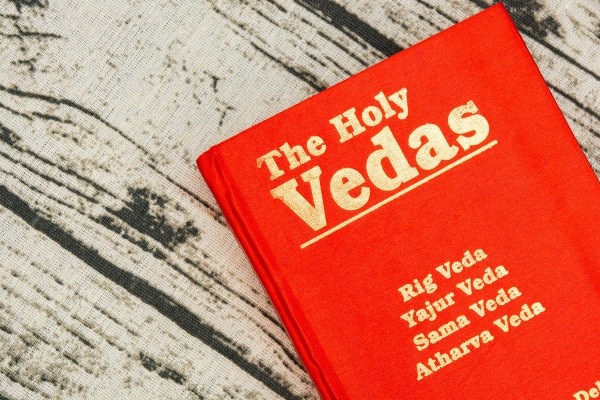
The Indo-Aryans had a rich oral tradition full of religious songs, mantras, and rituals that were passed down from one generation to another for centuries until they were finally written down somewhere between 1500 and 1200 BC. This act of preservation resulted in a series of sacred texts known as the Vedas.
It’s in the oldest Veda, the Rig Veda, where the word ‘yoga’ appears registered for the first time. It was used to describe the meditation practices of some long-haired ascetic wanderers that traveled through India during ancient times. Yet, according to tradition, it was the Brahmans (Vedic priests) and the Rishis (mystic seers) who actually began developing and refining yoga, throughout the period that stretched from the 15th to the 5th century BC.
For these sages, the appeal of yoga went far beyond the possibility of reaching a calmer state of mind. They considered that this practice could also help the individual reach the divine within him or her; through the renunciation or ritual sacrifice of the ego/self.
From the mid-5th to the 2nd centuries BC, Brahmans also documented their religious experiences and ideas in a collection of scriptures known as the Upanishads. For some scholars, the Upanishads are an attempt to organize the spiritual knowledge contained in the Vedas. However, traditionally, the practitioners of the different Vedic-based religions also had seen the Upanishads as a series of practical teachings, primarily composed to let individuals know how to integrate the core elements of this religious tradition into their lives.
There are at least 200 Upanishads that cover a wide range of religious topics, but only 11 of these are considered the ‘principal’ Upanishads. And, among these texts, the Yogatattva Upanishad is particularly relevant for yoga practitioners (or ‘yogis’), since it discusses the importance of the mastery of the body, as a means to attain spiritual liberation.
This Upanishad also touches on a recurrent, yet essential, theme of the Vedic tradition: The notion that people are not their bodies or minds, but their souls, which are best known as ‘Atman.’ Atman is authentic, eternal, and unchanging, whereas the matter is temporal and subject to change. Moreover, it’s the identification of people with matter that ultimately leads to developing a delusional perception of reality.
During this period, it was also established that there were at least four kinds of yoga. These are:
- Mantra Yoga: A practice centered on the chanting of mantras
- Laya Yoga: A practice focused on the dissolution of consciousness through meditation
- Hatha Yoga: A practice that puts its emphasis on physical activity
- Raja Yoga: A combination of all the previous types of yoga
All these teachings would eventually be further developed and organized by the yogi sage Patanjali.
Patanjali and the Development of Classical Yoga
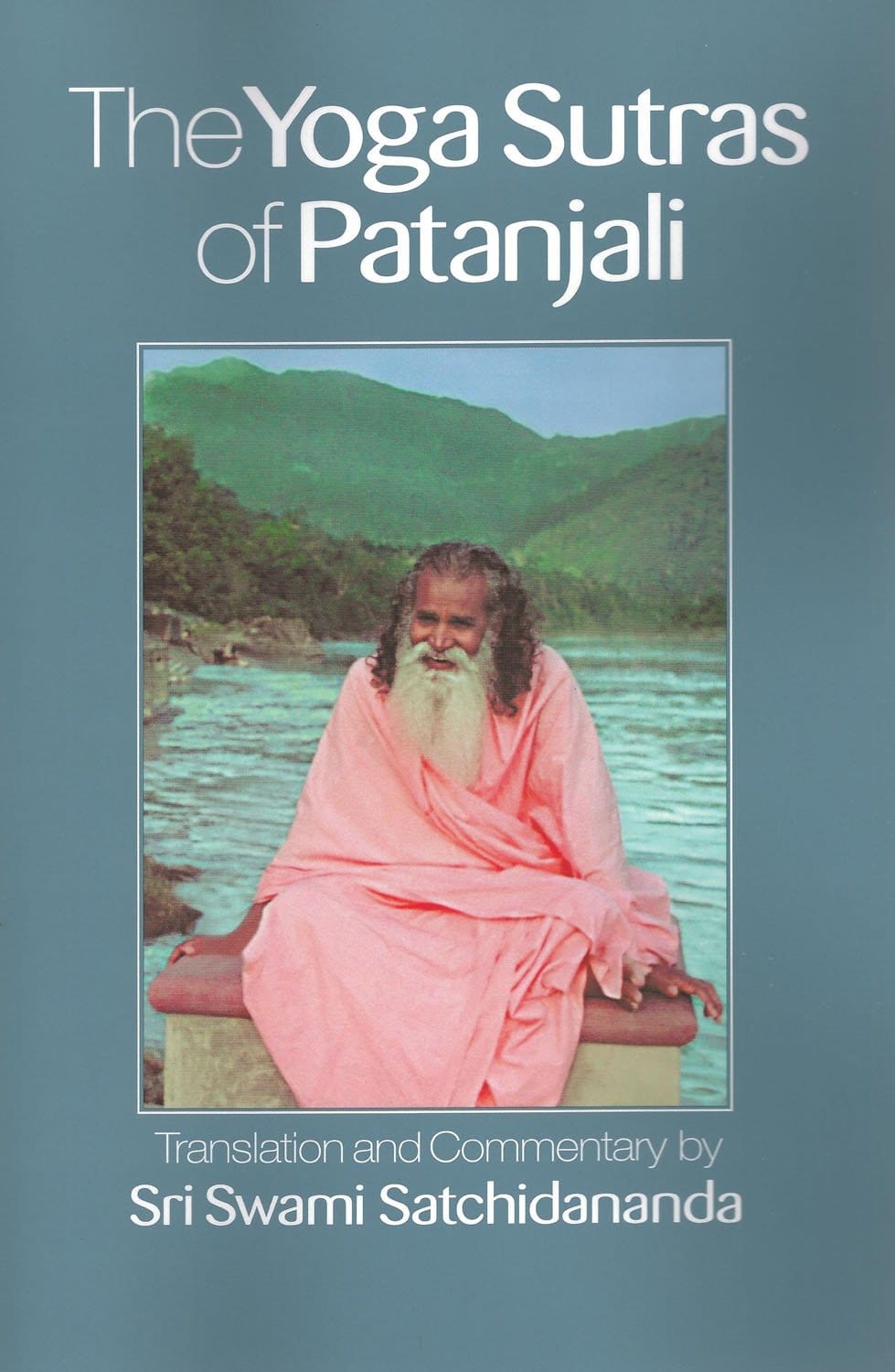
In its preclassical stage, yoga was practiced following several different traditions that evolved simultaneously but weren’t, strictly speaking, organized by a system. But this changed between the 1st and the 5th century CE, when the Hindu sage Patanjali wrote the first systematic presentation of yoga, which resulted in a collection of 196 texts, best known as the Yoga Sutras (or ‘Yoga Aphorisms’).
Patanjali’s systematization of yoga was deeply influenced by the philosophy of Samkhya, which postulates the existence of a primal dualism consisting of Prakriti (matter) and Purusha (the eternal spirit).
Accordingly, these two elements were originally separate, but Purusha mistakenly began identifying itself with some aspects of Prakriti at some point in their evolution. Likewise, according to Patanjali’s vision, humans also go through this sort of alienating process, which ultimately leads to suffering. However, yoga attempts to reverse this dynamic, by giving individuals the opportunity to progressively leave the illusion of the ‘self-equals-matter’ behind, so that they can re-enter their initial state of pure consciousness.
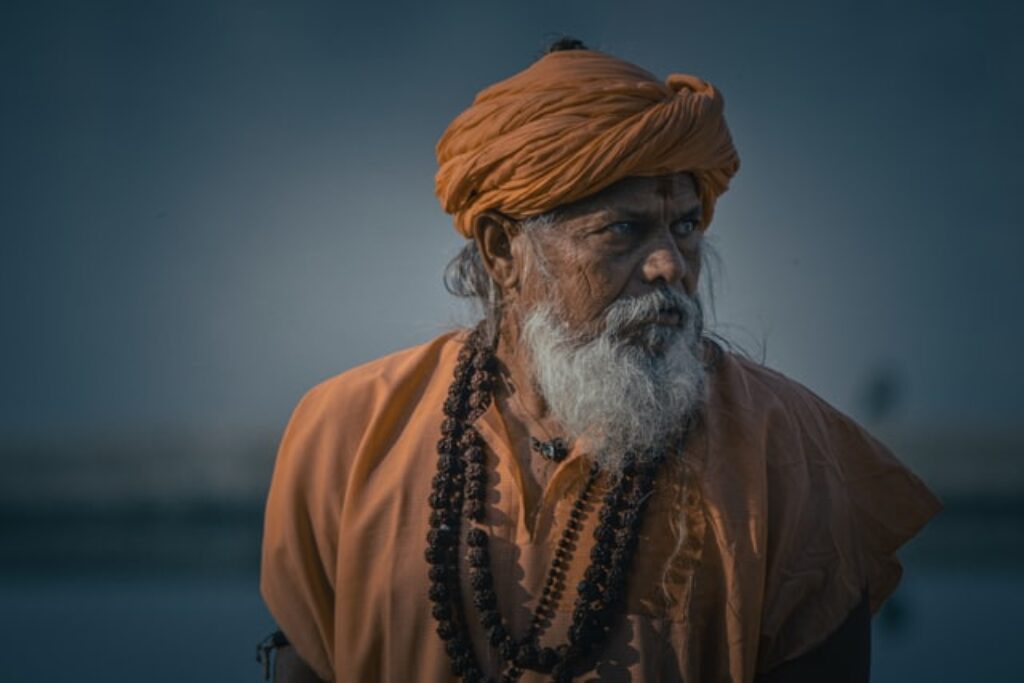
Patanjali’s Ashtanga Yoga (Eight-limbed Yoga) organized the practice of yoga into eight stages, each one of which the Yogi has to master in order to attain Samadhi (enlightenment). These stages are:
- Yama (restraint): Ethical preparation that involves learning how to control the impulse to injure other people. Crucial to this stage is abstinence from lying, avarice, lust, and stealing.
- Niyama (discipline): Also centered on the individual’s ethical preparation, during this stage, the yogi must train himself to practice regular purifications of his body (cleanliness); to be content with his material situation; to have an ascetic way of life; to be constantly studying the metaphysics associated with spiritual liberation; and to deepen his devotion to god.
- Asana (seat): This stage comprises a series of exercises and body postures that are meant to improve the physical condition of the apprentice. Asana aims to provide the yoga practitioner with more flexibility and strength. In this phase, the yogi should also master the ability to hold the learned postures for extended periods.
- Pranayama (breath control): Also concerned with the individual’s physical preparation, this stage is constituted by a series of respiratory exercises intended to induce the yogi into a state of complete relaxation. Pranayama also facilitates the stabilization of the breath, which in turn allows the practitioner’s mind to avoid getting distracted by recurrent thoughts or sensations of physical discomfort.
- Pratyahara (withdrawal of the senses): This stage involves exercising the ability to withdraw the attention of one’s senses from objects as well as other external stimuli. Pratyahara is not closing the eyes to reality, but instead consciously closing one’s mind processes to the sensory world so that the yogi can start approaching his inner, spiritual world.
- Dharana (concentration of the mind): Through this phase, the yogi must exercise the ability to fix his mind’s eye onto one particular inner state, an image, or one part of his body, for extended periods of time. For example, the mind can be fixed to a mantra, the image of a deity, or the top of one’s nose. Dharana helps the mind from wandering from one thought to another, thus improving the practitioner’s capacity for concentration.
- Dhyana (concentrated meditation): Further going into the preparation of the mind, at this stage, the yogi must practice a kind of non-judgemental meditation, focusing his mind on one fixed object. Through Dhyana, the mind is liberated from its preconceived ideas, allowing the practitioner to actively engage with its focus.
- Samadhi (total self-collectedness): This is the highest state of concentration that a person can achieve. Through Samadhi, the stream of consciousness of the meditator flows freely from him to the object of its focus. It’s also considered that the yogi also gains access to a higher and purer form of reality at reaching this stage.
According to Hinduism, the mastering of Samadhi (and the subsequent attainment of enlightenment that comes with it) allows the individual to achieve Moksha, i.e., spiritual liberation from the cycle of death and rebirth (Samsara) in which most souls are trapped.
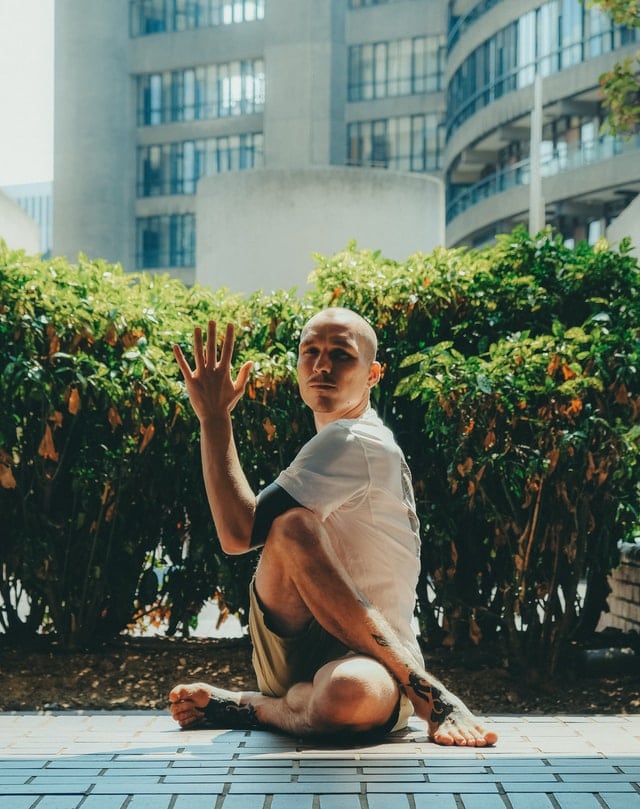
Today, the majority of the yoga schools that exist base their teachings on Patanjali’s vision of classical yoga. However, in the Western world, most yoga schools are predominantly interested in the physical aspects of yoga.
How Did Yoga Reach the Western World?
Yoga first reached the Western world between the late 19th and the early 20th centuries, when some Indian sages that had traveled to Europe and the US began spreading the news of this ancient practice.
Historians often suggest that it all started with a series of lectures given by the yogi Swami Vivekananda at the Parliament of World Religion in Chicago in 1893, regarding the practice of yoga and its benefits. There, Vivekanada’s talks and subsequent demonstrations were received with awe and great interest by his western audience.

The yoga that came to the West was, however, a simplified version of the older Yogic traditions, with an emphasis on the asanas (body postures). This would explain why in most cases the general public from the Western thinks of yoga mostly as a physical practice. Such simplification was carried out by some renowned yoga masters like Shri Yogendraji and Swami Vivekananda himself.
A wider audience had the opportunity of getting a closer look at this practice when yoga schools began to be inaugurated in the US, during the first half of the 20th century. Among these institutions, one of the most remembered is the yoga studio founded by Indra Devi in Hollywood, in 1947. There, the yogini welcomed various movie stars of the time, such as Greta Garbo, Robert Ryan, and Gloria Swanson, as her pupils.
The book Le Yoga: Immortalité et Liberté, published in 1954 by the famous historian of religions Mircea Eliade, also helped to make the religious and philosophical contents of yoga more accessible to western intellectuals, who soon figured that the Yogic traditions represented an interesting counterweight to the capitalist currents of thought of the epoch.
Which are the Benefits of Practicing Yoga?
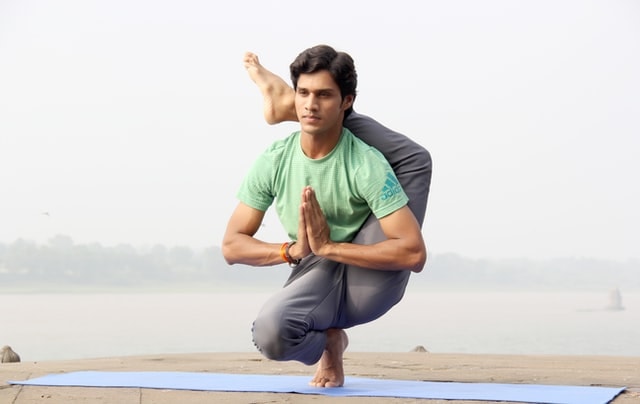
Besides helping people tune into their inner spiritual world, practicing yoga also has other (more tangible) benefits, especially regarding the improvement of one’s physical and mental health. These are some of the advantages that you might benefit from if you decide to take up yoga:
- Yoga may help to regulate blood pressure, which in turn lessens the risk of suffering heart attacks
- Yoga can help to improve the flexibility, balance, and strength of the body
- Breathing exercises associated with yoga can improve the functions of the respiratory system
- Practicing yoga can also reduce stress
- Yoga can help to reduce inflammation in joints and swollen muscles
- Practicing yoga allows the mind to keep focused on tasks for more extended periods of time
- Yoga might help to reduce anxiety
- Practicing yoga can also significantly improve the postures of the body
- Yoga might help to improve sleep habits
To Recap
Yoga clearly has had a long history, during which time it evolved. Here’s a quick recap of the main points discussed above:
- Yoga was first practiced by the Indus-Sarasvati civilization, in the Indus Valley (North-West India), approximately between 3500 and 3000 BC.
- In this early stage, yoga was probably considered as a contemplation exercise.
- After the Indus-Sarasvati civilization ended, somewhere around 1750 BC, the Indo-Aryans peoples inherited the practice of yoga.
- Then came a process of development that lasted for around ten centuries (15th-5th), during which the practice of yoga evolved to include religious and philosophical contents.
- This rich tradition was later organized by the Hindu sage Patanjali, who, at some point between the 2nd and 5th century CE, presented a systematized version of yoga, known as Ashtanga Yoga (Eight-limbed Yoga).
- Patanjali’s vision postulates that there are eight stages in yoga, each of which the practitioner has to master first, to attain enlightenment and spiritual liberation.
- From the late 19th century onward, some yogi masters introduced a simplified version of yoga into the Western world.
Today, yoga continues to be popular around the world, lauded for its physical and mental benefits.





